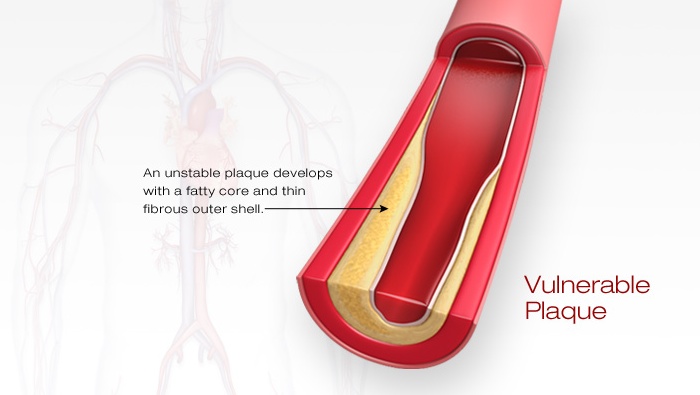Atherosclerosis and Stroke

Atherosclerosis is often referred to as “hardening of the arteries.” The word “atherosclerosis” comes from the Greek words athero (meaning gruel or paste) and sclerosis (hardness). It’s the process of fatty substances, cholesterol, cellular waste products, calcium and other materials building up in the inner lining of an artery, forming what is called plaque.
Atherosclerosis is a slow, complex disease that typically starts in childhood and often progresses as people age. This disease progresses rapidly in some people in their 20s. In others, it doesn’t become a threat until they’ve reached their 50s or 60s. View a detailed animation of atherosclerosis.
Causes of atherosclerosis
People with a family history of premature cardiovascular disease have an increased risk of atherosclerosis. Other risk factors for atherosclerosis include:
- High blood cholesterol
- Cigarette smoking and exposure to tobacco smoke
- High blood pressure
- Diabetes mellitus
- Inflammatory diseases such as rheumatoid arthritis and psoriasis
- Older age, particularly after age 55 in women
- Obesity and excess weight
- Physical inactivity
How it starts
The inner lining of the artery can be damaged due to high cholesterol and triglyceride levels, toxic substances in cigarette smoke, high sugar levels, and other factors in the blood. High blood pressure can also cause damage to the inner lining of an artery. Once the blood vessel is damaged, atherosclerosis begins and plaque forms.
Watch an animation of atherosclerosis.
How it progresses
Because of the damage to the lining of the artery, fats, cholesterol, platelets, cellular debris and calcium begin to deposit in the artery walls. These substances can make cells in the artery wall produce more materials. This causes a gathering of cells in the inner layer of the artery wall, which leads to atherosclerosis. These cells collect and multiply. Meanwhile, fat builds up in and around these cells creating plaque. It usually affects larger arteries. These cells and surrounding materials make the artery lining thicker. This makes the artery narrower, reducing blood flow and oxygen supply.
How plaque causes damage
Most of the damage occurs when plaques become fragile and rupture. Plaques that rupture cause blood clots. Sometimes, clots get stuck in a vein or artery and can block blood flow. They can also travel in the bloodstream to other parts of the body, like the brain.
If a clot blocks a blood vessel that feeds the heart, it causes a heart attack. If it blocks a blood vessel that feeds the brain, it causes a stroke. If it blocks or reduces blood supply to the arms or legs, it can cause difficulty walking and, eventually, gangrene. This can happen with peripheral artery disease, which is more common in people with diabetes, or those who smoke or have high blood pressure.
Stroke and atherosclerosis
Blood clots caused by atherosclerosis can lead to ischemic strokes. There are two types of ischemic stroke:
- Atherothrombotic stroke (also called thrombotic stroke) is the most common type of stroke. It happens when a blood clot forms on plaque within a blood vessel in the brain. This blocks blood flow to that part of the brain.
- Cerebral embolism occurs when a clot or some other particle, called an embolus, travels through the bloodstream and lodges in an artery leading to or in the brain and blocks blood flow. Most embolic strokes are due to blood clots that form during atrial fibrillation.





